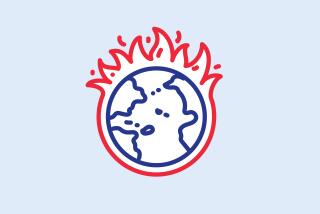How a credit default swap deal works
- Share via
The market for credit default swaps on California bonds, allowing investors essentially to take out an insurance policy on the state’s debt, has grown sharply in the last two years.
Here is how a swap deal works, according to Marc Barrachin, director of credit products at Markit, a financial data company.
If an investor such as a hedge fund, Hedge Fund A in Barrachin’s example, believes that California is going to have difficulty repaying its debt, it can go to a Wall Street firm that deals in municipal credit default swaps.
To obtain protection on, say, $10 million of five-year California bonds, the hedge fund currently must agree to pay the swap dealer about $280,000 a year for five years — or 2.8% of the amount of bonds to be protected.
In this transaction the dealer is the seller of protection, but it doesn’t want to risk a big loss if the state misses a payment. To counter that risk, the dealer looks for another party, say Hedge Fund B, that is confident about California bonds and wants to sell protection as a way to generate income. They enter into a deal, creating a second credit default swap contract, calling for the dealer to pay Hedge Fund B about $260,000 a year.
The dealer is a seller of the first contract and a buyer of the second, perfectly hedging the firm’s risk. But the dealer will make a profit of about $20,000 each year — the difference between what it will receive from Hedge Fund A each quarter and what the dealer will pay Hedge Fund B.
In most cases, those regular payments are the only things that happens until the swaps expire.
But if California has a “credit event” — missing a payment to bond holders or reaching an agreement with bond holders to reduce or delay its payments — the dealer must pay the hedge fund an amount equal to the decline in the bonds’ market value.
The drop in value is determined in an auction run by a trade association of swap dealers.
If the auction determines that the $10 million in bonds are now worth $7 million, the dealer must pay Hedge Fund A the $3 million difference. And Hedge Fund B has to pay the dealer the same amount, making the dealer whole.
If Hedge Fund A actually owned $10 million in California bonds, it would also now be made whole. But if Hedge Fund A does not own the bonds, it makes a $3 million profit.
More to Read
Inside the business of entertainment
The Wide Shot brings you news, analysis and insights on everything from streaming wars to production — and what it all means for the future.
You may occasionally receive promotional content from the Los Angeles Times.










